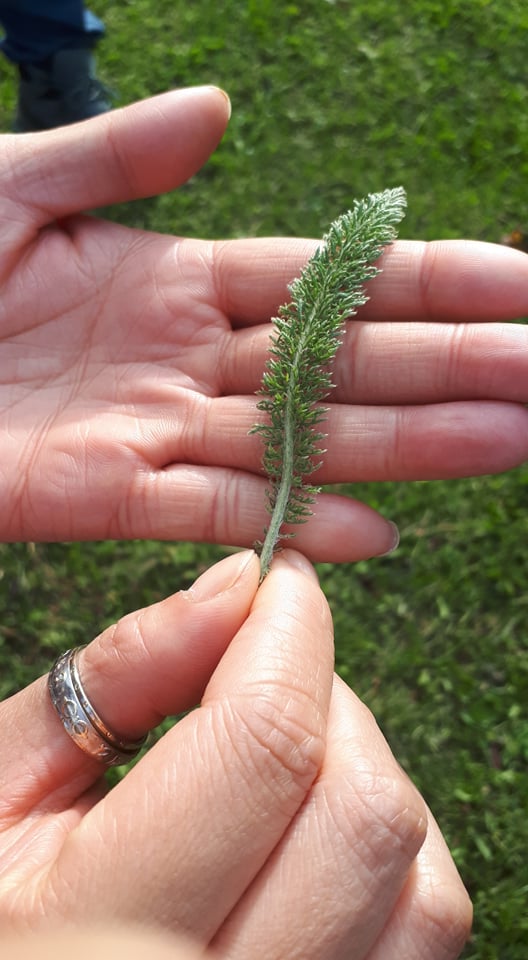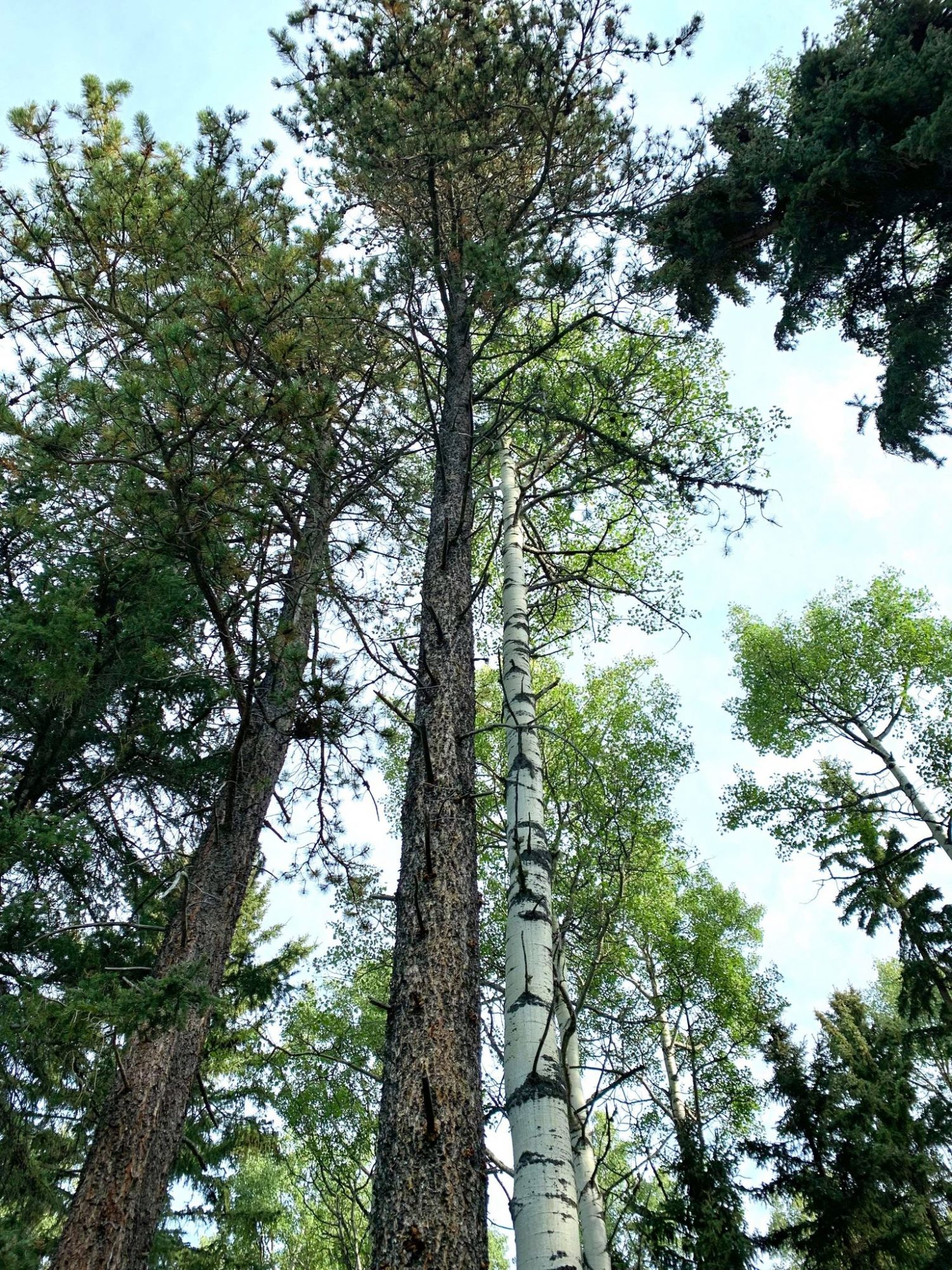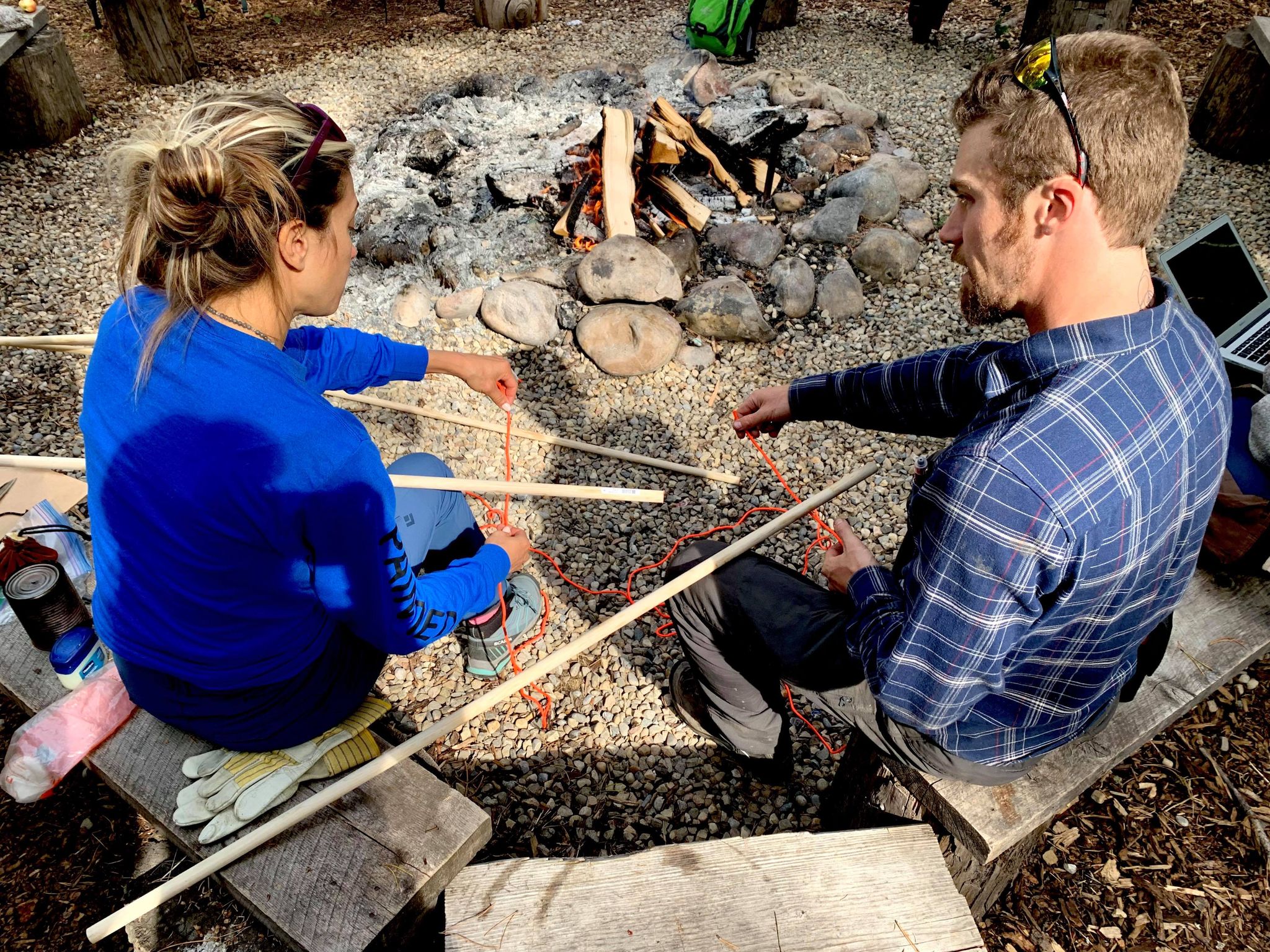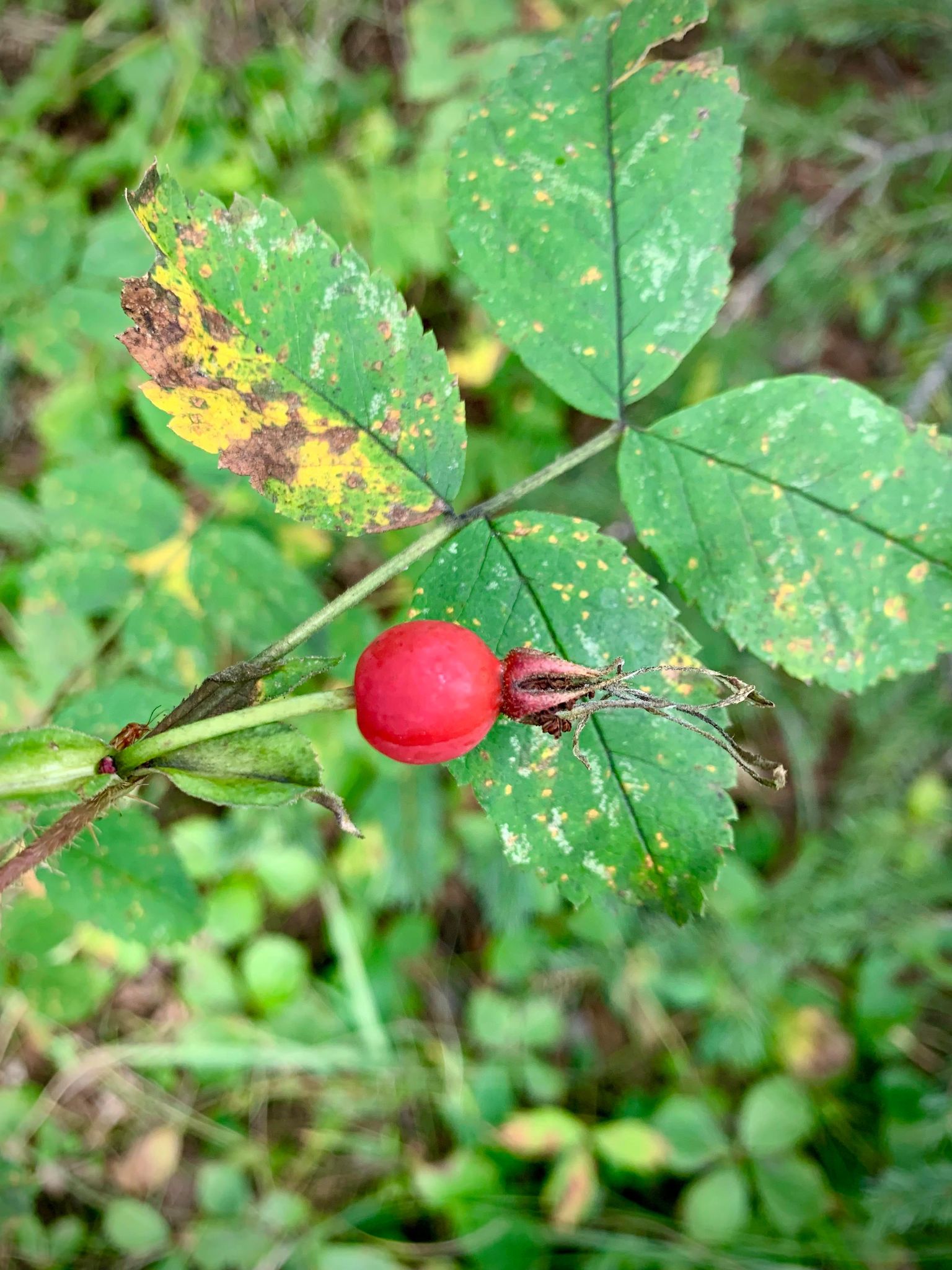We are walking with nature in a sun-dappled forest as we learn about Indigenous healing traditions with Painted Warriors, an Indigenous-owned business near Sundre in the Alberta foothills.
Our guide, George, points out a native plant with feathery grey-green leaves, carefully breaking off a small leaf, crushing it to release the oils and passing it around for everyone to sniff. The crushed leaf smells either harsh and minty or sweet and sage-like, depending on each person’s body chemistry. Yarrow’s leaves are the medicinal component used by Indigenous people and many other cultures around the world.

A yarrow leaf, photo by Sylvia Louie
Painted Warriors’ Bimose Stories of the Forest is a discovery tour that combines natural navigation and interpretation of plants and the wilderness along with practical skills handed down for generations in Indigenous culture. “We want people to walk away with skills they can use,” says George, an interpretive guide with Painted Warriors. “You learn a broad range of things that can spark the next step. You gain a perspective on Indigenous knowledge and how it could connect to other cultures.”
Different parts of a plant will have various medicinal properties. For example, the white powder that comes off the south-facing side of aspen tree trunks can be used as sunscreen and offers SPF 15 sun protection. Aspens have creamy white bark on the sun side, facing south. So you’ll always know which way is south simply by looking at which way the white side of an aspen tree is facing.

The white bark of Aspen trees faces south Photo by Robyn Louie
Aspen bark is a source of salicylic acid and salicin, known by First Nations peoples for generations – and then modern medicine turned it into acetylsalicylic acid – aspirin.
George stops to show us a plantain, whose leaves are good at preventing infection, for example, to pull a tooth infection out. “Crush it, then mix it with your saliva and put it on the affected area – it’s a natural poultice,” he says.
Then, George gives an overview of tracking basics. He gets down on all fours to show us how different animals walk. Deer, wolves and coyotes are all diagonal walkers – as opposed to bears and wolverines, with much broader shoulders, which are pacers.
Next, he shows us what an adult grizzly track would look like, drawing the shape in the soil. The paw print would measure just under 30 cm long and approximately 15 cm wide.
We finish our half-day forest walk by building a cooking tripod for cooking and boiling water out of three long, solid thick branches, lashed together with a cord and finished off secured with a clove hitch (knot). “The tripod should be at least your height or about a foot higher.”
We learn how to start a fire using a ferrocerium, or ferro rod (an emergency fire start device) and cotton batting balls patches to set sparks. George gathers kindling of varying sizes to build a crackling fire.

Rebecca (left) learns about tying a clove hitch to secure the tripod for cooking over a fire. Photo Robyn Louie
“One of the most important survival tools is fire – because then you have warmth, you have comfort.” Fire can ward off animals and can also give a signal at night (to rescuers).
The Bimose forest walk wraps up with an alfresco lunch, prepared by Painted Warriors, and set on a grate over the fire. It’s absolutely delicious: portobello mushrooms and elk steak, accompanied by baked potatoes with all the fixings, and Caesar salad. We sit in a circle around the fire and refresh ourselves with cups of sweet herbal tea, which George has brewed with lavender flowers, liquorice root, star anise and rosehips.

Rose hips, the fruit of the wild rose, Alberta’s provincial flower – Photo Robyn Louie
Our small group had fun learning about these different aspects of Indigenous traditional knowledge as we basked in the sunshine, surrounded by the tranquillity of the forest.
“It was a down to Earth, Mother Nature kind of experience,” says Sylvia, a Calgarian who has been enjoying exploring nature in southern Alberta this past summer. “It was very insightful. Those are really good basic first aid kinds of tips and tricks.
“It’s good for all fitness levels, including for someone like myself with health issues (rheumatoid arthritis). It wasn’t strenuous and didn’t take a toll – I was able to enjoy it ever so much.”
Adds Karen: “I really appreciate the knowledge you’re getting with this course. You might think, ‘This is just another weed’ – but this is actually medicine, this is food. That’s what I found fascinating – that’s what I found most rewarding.”
Robyn, a keen Calgary gardener and snowboarder who spends lots of time outdoors, describes the Bimose forest walk as “a good introduction to that way of looking at the world. You realize there’s a lot deeper you can go,” she says.
“When (our guide) was showing us the bark on the aspen tree and saying, ‘This powder is an analgesic, and you can use it to alleviate pain, and it’s the same thing that aspirin comes from’ – it makes you remember that everything comes from nature in some form. It brings you back to the origins of ingredients and medicine. There are overlaps between modern medicine and Indigenous healing.
“It was fun and interesting. And it’s definitely child-friendly.”
Painted Warriors offers the Bimose Stories of the Forest program year-round. If you go during the winter, you’ll be heading out on snowshoes (Bimaagimose Snowshoe Experience). For information on all of the Painted Warriors’ programs, visit www.paintedwarriors.ca




